Water Quality InformationWritten By Actual Experts
RSSHidden Effects of Drought on Drinking Water
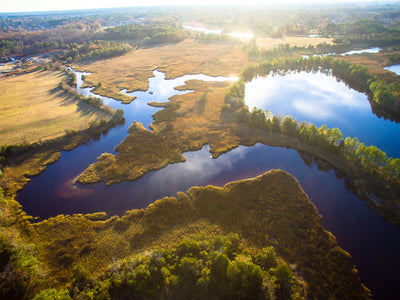
Trump's "Dirty Water Rule" to be Revised
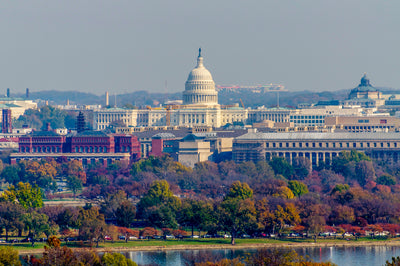
Emily Driehaus | Science Communication Intern
The Environmental Protection Agency (EPA) announced that it will revise regulations from the Trump administration that limit protections for certain bodies of water. The rule, commonly referred to as WOTUS, has been amended several times over various years.
The EPA and the Army said in a statement that the rule “is leading to significant environmental degradation.” Acting Assistant Secretary of the Army for Civil Works Jaime Pinkham also said that current regulations established under the Trump administration have led to a drop of 25 percentage points in decisions that would give bodies of water protections under the Clean Water Act.
The Navigable Waters Protection Rule was established on April 21, 2020 after the Trump administration repealed an Obama-era rule that recognized smaller bodies of water as “waters of the United States” and gave them protections if they contributed to a larger water source. Protecting these small water sources was meant to prevent pollution from flowing into larger bodies of water, including drinking water resources.
The Trump administration’s rule updated the definition of “waters of the United States” to exclude waters such as wetlands and streams from receiving protections under the Clean Water Act.
The exclusion of certain bodies of water under the Navigable Waters Protection Rule is most significant in arid states like Arizona and New Mexico. Of the 1,500 streams in these two states, almost every one is excluded from protections.
According to The Hill, EPA Administrator Michael Regan said that the agency will not “return verbatim” to the regulations from the Obama administration in a recent congressional hearing.
A statement released by the EPA said that the new regulations will be guided by the Clean Water Act, the effects of climate change on water resources, the practicality of implementation, and input from the agricultural community, tribal and local governments, environmental groups, and communities with concerns about environmental justice.
Our Take
We are very encouraged by the Biden administration and EPA’s step toward fixing water regulations. Water pollution can expose the public to harmful chemicals and substances through their drinking water, and we hope the new revisions to the Navigable Waters Protection Rule will recognize the importance of small bodies of water to the environment and our drinking water systems and protect them from pollution.
Other Articles We Think You Might Enjoy:Water Infrastructure and Cybersecurity
The American Jobs Plan To Allocate $111 Billion To Water Infrastructure Improvements
New Legislation Aims to Tackle Coal Ash Pollution
Drinking Water Supplies Risk Contamination from Toxic Wastewater Ponds
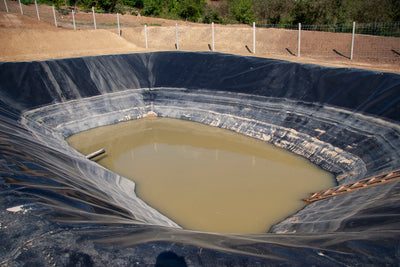
How Do Hurricanes Affect Your Drinking Water?
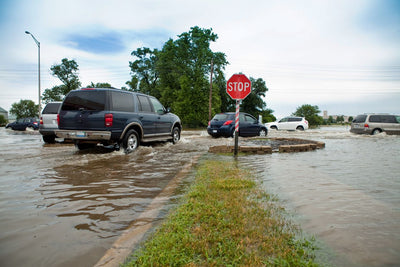
Emily Driehaus | Science Communication Intern
The start of hurricane season not only brings the threat of deadly storms, but also the potential for problems with drinking water infrastructure and systems. Heavy rain and flooding from hurricanes can interfere with both public and private water systems and contaminate water sources, leaving individuals without safe drinking water for days after a hurricane.
Drinking Water Contamination From Stormwater Runoff
Stormwater runoff can contaminate both groundwater and surface water during a hurricane. As stormwater runs into a storm drain or the nearest body of water, it picks up both biological and chemical contaminants from the ground that make their way into the water supply. Impervious surfaces exacerbate this problem, as stormwater cannot penetrate the ground and instead sits on top of these surfaces, contributing to flooding during a hurricane. Some local governments, such as Washington, D.C. and other municipalities surrounding the Chesapeake Bay, are working to combat this issue by replacing impervious surfaces with materials that soak up stormwater and allow it to permeate the ground instead of sitting on top of surfaces gathering contaminants that harm drinking water supply.
Hurricane Flooding and Water Systems
The large influx of water from hurricane rain and flooding can overwhelm both public and private water systems, leading to the overflow of sewers, wells and other parts of water infrastructure. Combined sewer overflows are systems designed to collect stormwater runoff, sewage and other wastewater to be transported to a wastewater treatment plant to be treated before moving to a larger body of water. Hurricane rain and flooding can cause these systems to overflow and untreated water can spill into nearby water sources, potentially contaminating drinking water supply. Wells can also be contaminated with sewage, bacteria and other microorganisms due to hurricane flooding.
Hurricanes and Water Treatment Facilities
Water treatment plants are not immune to the power outages and structural damage caused by hurricane winds. Treatment plants can lose power and infrastructure can be damaged during a hurricane, leaving facilities without the ability to treat water. Equipment and infrastructure in water treatment plants can also be contaminated by runoff and floodwater. The inability of treatment plants to treat water due to power outages leads to boil water notices to ensure people in the affected area are not ingesting biological contaminants through their drinking water.
Case Study: Hurricane Harvey
Hurricane Harvey made landfall in southeast Texas on August 25, 2017, and bombarded the Gulf Coast with heavy rain and wind for days. The Category 4 storm caused $125 million in damage in Texas and Louisiana, including damage to water systems. According to the Texas Commission on Environmental Quality, 61 public drinking water systems and 40 wastewater facilities were declared inoperable and 203 boil water notices were issued during the storm. Flooding also damaged chemical and energy plants in the area, leading to the contamination of surface water and drinking water reservoirs with sewage, wastewater and toxic chemicals. All inoperable facilities, except one wastewater facility, were restored in the cleanup process following the storm. However, tap water was not safe to drink in some communities for months, with boil water notices lasting into December for some areas affected by the storm.
How To Prepare for Water Service Interruptions in a Hurricane
The best way to avoid losing access to clean drinking water is to prepare before the storm arrives. The National Hurricane Survival Initiative recommends beginning preparations as far in advance as possible to avoid the chaos at stores right before a hurricane hits. Buying bottled water is an option for individuals preparing for a hurricane, but prices can increase dramatically right before a storm due to increased demand. Alternatively, individuals can store their own water in the days before a hurricane hits. The NHSI recommends storing water in containers made out of durable materials, such as plastic bottles. Because hurricanes can leave water treatment plants without power and contaminate water sources, individuals should prepare enough water, about a gallon, per person for at least three days.
Other Articles We Think You Might Enjoy:How Do Wildfires Impact Water Quality?
What You Need To Know About Surface Water Pollution
How Are Public and Private Water Systems Susceptible to Temporary Outages?
PFAS or "Forever Chemicals" in Massachusetts Drinking Water
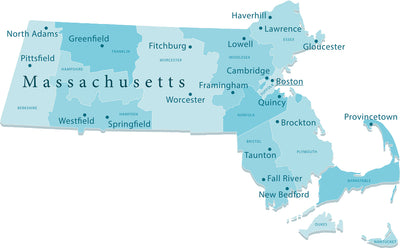
Analies Dyjak, M.A. | Head of Policy
The State of Massachusetts recently implemented new testing requirements and water quality standards for 6 different PFAS variations. PFAS (Per and Polyfluoroalkyl Substances) are a federally unregulated contaminant known to cause adverse health effects, including cancer. These new requirements have forced municipalities to take a closer look at the safety of their drinking water. This article will address what PFAS compounds are, the "safe" levels in Massachusetts drinking water, and water filtration brands that actually remove them.
New PFAS Law in Massachusetts
Massachusetts became one of the first states to adopt drinking water standards for PFAS chemicals in January, 2021. Prior to January of this year, municipal water suppliers throughout Massachusetts were not required to test for PFAS compounds, nor remove them. It's important to point out that PFAS are not a new issue in Massachusetts tap water, and that they have been used in various types of manufacturing since the 1950's. The only major change is that now municipalities are required to test for it.
In October, 2020, the Massachusetts Department of Environmental Protection set an enforceable standard of 20 parts per trillion for the sum of six PFAS compounds in drinking water. The six compounds, called PFAS6, are: PFOS, PFOA, PFHxS, PFNA, PFHpA, and PFDA. This regulation means that if a water sample exceeds 20 parts per trillion for all six compounds, that the municipal provider is in violation of the state law.
What Are Per and Polyfluoroalkyl Substances?
Per and Polyfluoroalkyl Substances (PFAS) are a category of harmful compounds that can be found in drinking water sources across the country. PFAS can take hundreds of years to degrade in the environment which is why you may see them referred to as ‘forever chemicals.’ PFAS are not currently regulated at the federal level, but some states have created regulations or monitoring criteria, including Massachusetts. They are known to increase the risk of cancer, increase cholesterol, increase the risk of miscarriage by 80-120%, and several other negative health outcomes. According to the National Institute of Health, over 4,700 different PFAS variations have been used in some type of manufacturing since the 1950’s. PFAS enter drinking water when they are disposed of in groundwater, surface water, or manufacturing retention ponds.
Is 20 ppt Safe?
There’s a bit of uncertainty around the “safe level” of exposure to PFAS compounds. There are only a handful of studies that assess associated health impacts, and most agree that more research is necessary to make a determination. In 2016, EPA set a non-enforceable Health Advisory Level of 70 parts per trillion for combined PFOA and PFOS. More recent data suggests that this level is far to high to provide meaningful protection against a range of negative health impacts. A more recent study found that a “safe level” or PFAS could be as low as 0.1 parts per trillion. Although the Massachusetts PFAS standard is on the lower end of state limits, our team would rather see even less PFAS allowed in municipal tap water.
Not All Water Filters Remove PFAS
If you live in Massachusetts and you’re looking for a solution, it’s important to understand that not all water filters are able to remove PFAS chemicals. Duke University completed a study in 2020 that tested various filtration brands and their ability to remove PFAS from drinking water. The results found that popular brands including Brita and Pur did not do a good job of removing PFAS compounds. Refrigerator filters tested by the Duke research team, including; Samsung, Whirlpool, and GE, also failed to remove PFAS. The full results of this study can be found here. Hydroviv filters are both NSF certified and third-party tested to remove PFAS chemicals. To request our full testing and removal data, please email hello@hydroviv.com.
Other Articles We Think You Might Enjoy:Yale: PFAS Increase The Risk of Miscarriage by 80-120%
PFAS Update: Spring 2021
Why Do Military Bases Have High Levels of PFAS Chemicals?






